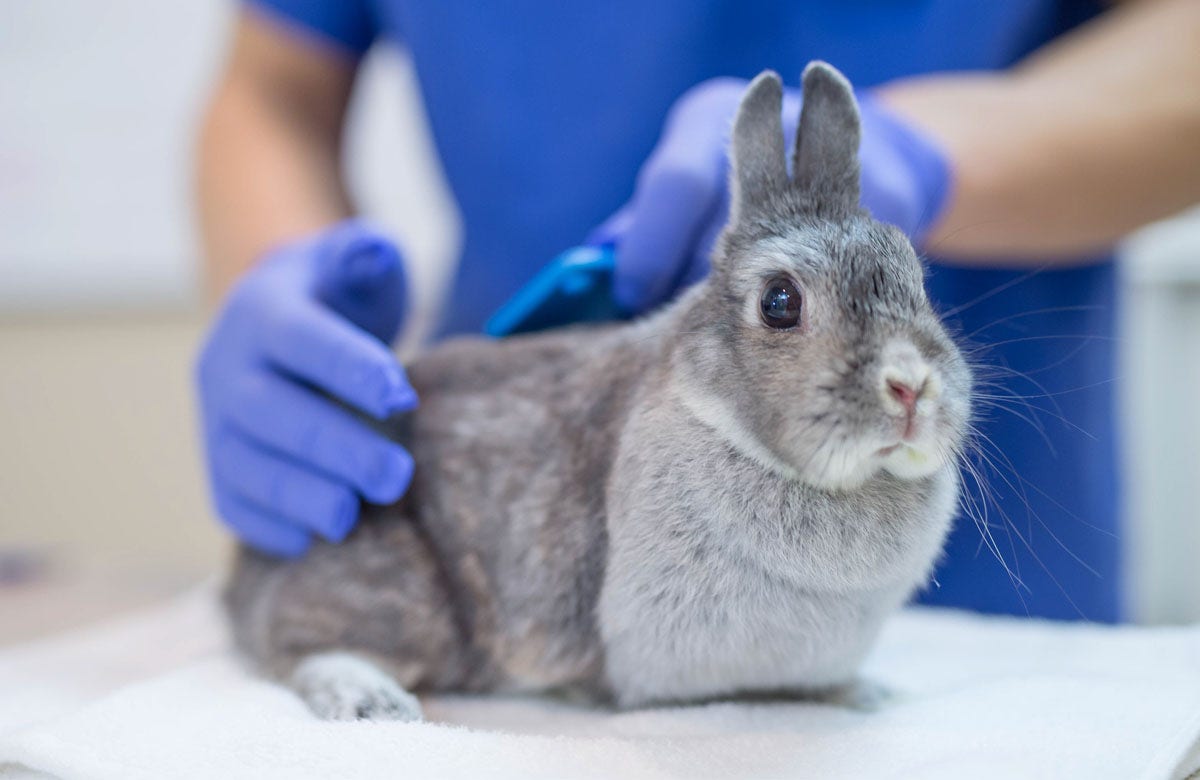Health
Rare disease diagnosis strengthens bond between twin sisters: ‘Doing our best’

As twins and best friends, Natalie and Monica Rex had spent their entire lives together — and were looking forward to continuing those shared experiences into adulthood.
But right before college graduation eight years ago, the twins — now 30 — were shocked to discover that Natalie has Friedreich’s ataxia (FA), a rare, genetic and usually fatal neurological disease that affects only 6,000 people in the U.S.
The sisters joined Fox News Digital for an on-camera interview about how the little-known disease has changed their lives — and further strengthened their unbreakable bond. (See the video at the top of this article.)
FAMILY SELLING DREAM HOME TO FUND LIFE-SAVING TREATMENT FOR 5-YEAR-OLD DAUGHTER
Natalie was nearing the end of her senior year in college when she started noticing symptoms — primarily issues with her balance.
“I was doing a 5K with my college roommates, and I was just feeling super awkward and clumsy — I would hit about three miles and feel really tired,” she told Fox News Digital.
Natalie and Monica Rex were shocked to discover that Natalie has Friedreich’s ataxia (FA), a rare, genetic and usually fatal neurological disease that affects only 6,000 people in the U.S. (Natalie and Monica Rex)
That was abnormal for Natalie, who grew up playing sports in a very athletic family.
“I knew something was off,” she said.
FATHER CREATED A DRUG TO SAVE HIS SON FROM A RARE DISEASE, NOW OTHER FAMILIES ARE DESPERATE TO GET IT
After seeing multiple doctors, having her blood drawn and getting tested for vitamin deficiencies, Natalie finally saw a neurologist.
“He had seen FA before, which was such a gift, because normally the path to diagnosis — particularly for a rare disease — is much longer, and mine was a very short time frame,” she added.
The diagnosis was a lot to process for Natalie, who was three days from graduation and about to depart for a new job in New York.
“I remember thinking, ‘I can’t imagine what life would be without Natalie.’”
“I was trying to figure out how to get excited about life when I was experiencing everything crumbling,” she said.
“I was an emotional wreck — my whole family had never heard of FA, and we had no idea what to expect and how it would impact things.”

The twins, now age 30, were about to graduate from college when Natalie received her diagnosis. (Natalie and Monica Rex)
Monica also had a difficult time processing the news.
“It felt like our lives were going to be drastically different and also diverge quite a bit,” she told Fox News Digital during the same interview.
“I remember thinking, ‘I can’t imagine what life would be without Natalie.’ It was a brutal time.”
MOTHER FRANTIC TO SAVE CLINICAL TRIAL THAT COULD CURE HER DAUGHTER: ‘THE TREATMENT IS SITTING IN A FRIDGE’
Monica has not yet gotten tested for FA, which she said was an “intentional decision.”
“In the beginning, there would be moments where I would trip on something and would wonder if I should get tested,” she said. “But after seeing some of Natalie’s progression, I don’t think that I have FA.”
She added, “If I do have it, we’ll find out when we need to — but there’s no need to expedite that.”
What to know about FA
Friedreich’s ataxia (FA) is defined as a “genetic, progressive neuromuscular disease,” according to the Friedreich’s Ataxia Research Alliance.
Initial symptoms include balance and coordination problems, which ultimately lead to a loss of mobility.

“It felt like our lives were going to be drastically different and also diverge quite a bit,” Monica (left), the twin who does not have FA, told Fox News Digital. (Natalie and Monica Rex)
Some people with FA also suffer from diabetes, scoliosis, fatigue, slurred speech, heart conditions, and vision and hearing impairment, the Alliance states.
As FA is genetic, a diagnosis is made by testing for a mutation in the gene FXN, which is responsible for causing the disease.
STIFF PERSON SYNDROME PATIENTS SHARE WHAT IT’S LIKE TO LIVE WITH THE RARE DISEASE
Most people are diagnosed in childhood between 5 and 15 years of age, according to the Alliance, but about a quarter of people experience symptoms as adults, which is known as late-onset FA.
The disease is classified as “life-shortening,” with life expectancy typically ranging from 37 to 50 years.
“It’s brutal to watch the person you love most in the world go through something they can’t control.”
While there is not yet a cure for FA, there are medications that can help control symptoms.
Natalie has participated in clinical trials for a drug called Skyclarys (omaveloxolone), the first FDA-approved therapy designed to slow progression of the disease.
Sisterly support
After Natalie’s diagnosis, she and her twin sister moved in together in Washington, D.C.
“Monica has taken on the role of being sister, friend, roommate and caregiver,” Natalie said.
“She wanted to stay close to help us live a very celebratory life while I’m in my more mobile years.”

“I think it’s really drawn us very close, which has been amazing,” Natalie (right) said of the twins’ experience of navigating life with FA. (Natalie and Monica Rex)
In many ways, the sisters enjoy life as they always have, hosting dinners and movie nights with friends — but in other ways, Natalie’s disease has resulted in two very different experiences for the twins.
“I think it’s really drawn us very close, which has been amazing,” Natalie said.
CLICK HERE TO SIGN UP FOR OUR HEALTH NEWSLETTER
“But it’s also created a lot of moments where we have to understand that our limits and our constraints are different, and we have to work together to give each other the freedom to do things differently.”
Monica expressed her pride in her sister’s determination and tenacity as she navigates FA, including taking “agency and ownership” of her health and participating in physical therapy and personal training.

As Christians, the sisters have drawn comfort and support from their faith as they navigate the challenges of Natalie’s disease. (Natalie and Monica Rex)
“It is an incredibly unfair situation, but she is completely taking it in stride,” Monica said.
“It’s brutal to watch the person you love most in the world go through something they can’t control that impacts every day and every moment — but we’ve just tried to take it day by day together.”
The sisters see their friendship and relationship as a “unique gift,” Monica added.
“There have been moments of tension as we figure out what it looks like to navigate this together — but we will always be there for each other, and we’ll always have each other’s backs,” she added.
“At the end of the day, we truly just want what’s best for each other.”
Leaning on faith
As Christians, the sisters have drawn comfort and support from their faith as they navigate the challenges of Natalie’s disease.
“I lean heavily into my faith to understand and process the purpose and hope that can come from a hopeless diagnosis like FA,” Natalie told Fox News Digital.

“The physical decline of Natalie’s body is a daily reminder that this world is not our home — and that one day, all things, including our bodies, will be made whole and healthy in eternity,” said Monica. (Natalie Rex)
One of Natalie’s favorite Bible verses is 2 Corinthians 4:16, which says, “Therefore we do not lose heart. Though outwardly we are wasting away, yet inwardly we are being renewed day by day.”
Monica added that she trusts God has a “bigger plan” for their pain.
“We’re going to have really hard moments, but we’re doing our best to make good things come from something hard.”
“The physical decline of Natalie’s body is a daily reminder that this world is not our home — and that one day, all things, including our bodies, will be made whole and healthy in eternity,” she said.
Despite her day-to-day struggles, Natalie strives to stay as positive as possible, focusing on “disrupting the myth that that joy can only be found in a pain-free life.”
For more Health articles, visit www.foxnews.com/health
“Life is not going to be perfect, but we can still make it really good,” she said.
“We’re going to have really hard moments, but we’re doing our best to make good things come from something hard.”

Health
Scientists May Be Able to Make Grapefruits Compatible With Medications They Currently Interfere With

You may be among the millions of people who have seen a surprisingly specific warning like this on the labels of drugs you take:
Avoid eating grapefruit or drinking grapefruit juice while using this medication.
Such warnings are issued for dozens of substances, including docetaxel, a cancer drug; erythromycin, an antibiotic; and some statins, the cholesterol-lowering drugs prescribed to more than a third of American adults over 40.
The problem is a set of molecules, furanocoumarins. High levels of furanocoumarins interfere with human liver enzymes, among other processes. In their presence, medications can build up to unhealthy levels in the body. And grapefruits and some related citrus fruits are full of them.
But there is no such warning for other kinds of citrus, such as mandarins and other oranges. Citrus researchers at the Volcani Center in Israel reported Wednesday in the journal The New Phytologist that, by crossing mandarins and grapefruit, they’ve uncovered genes that produce furanocoumarins in some citrus fruits. It’s a finding that opens the possibility of creating grapefruit that doesn’t require a warning label.
Scientists had worked out the compounds’ structures and pieced together a basic flowchart of how they are made years ago, said Yoram Eyal, a professor at the Volcani Center. But the precise identities of enzymes catalyzing the process — the proteins that snip off a branch here, or add a piece there — remained mysterious. He and his colleagues knew that one way to identify them was to breed citrus high in furanocoumarins with those without. If the offspring of such a cross had varying levels of the substances, it should be possible, by digging into their genetics, to pinpoint the genes for the proteins.
“We were afraid to approach it, because it’s very time-consuming and it takes many years,” he said, noting how involved it can be to grow new trees from seeds and assess their genetics. “But finally, we decided we have to dive in.”
When they examined the offspring of a mandarin and a grapefruit, the researchers saw something remarkable. Fifty percent of the young plants had high levels of furanocourmains, and 50 percent had none. That particular signature meant something very specific, in terms of how the ability to make these substances is inherited.
“We saw there was only one gene that could have controlled it,” said Livnat Goldenberg, a Volcani Center researcher who is the lead author of the new study.
The researchers soon identified the gene controlling the production of furanocoumarins in leaves and fruit, which produces an enzyme called 2-oxoglutarate-dependent dioxygenase, or 2OGD for short. Mandarins, it turns out, have a mutated form of this gene that keeps the enzyme from functioning properly. This version cropped up in all the mandarin and orange varieties the researchers checked, explaining why they do not cause the same problems as grapefruit in people taking prescription medications. In these plants, furanocoumarin production is paused.
With gene editing technology, it should be possible to alter the gene in grapefruit as well, Dr. Eyal suggests. The team at the Volcani Center is now exploring that project.
Looking at how widespread this mutated version is in mandarins and some other citrus, the scientists speculate that some gene nearby on the genome must play an important role in a highly prized trait. A long-ago citrus breeder, selecting for some unknown quality, must have unwittingly spread this furanocoumarin-busting version of the gene to an ancestor of modern varieties of mandarins and oranges.
All these years later, that person’s work is coming to light, under the gaze of geneticists, who may, someday, put grapefruit back on the menu.
Health
‘Rabbit fever’ cases rising in US as CDC warns of zoonotic bacterial disease

Cases of tularemia, also known as “rabbit fever,” are on the rise in the U.S., according to a new report from the Centers for Disease Control and Prevention (CDC).
Caused by the bacteria Francisella tularensis, the disease commonly infects rabbits, hares and rodents. However, it is zoonotic, which means it can spread from animals to humans.
The bacteria is a “tier-1 select agent,” a classification given to agents and toxins that “present the greatest risk of deliberate misuse with significant potential for mass casualties or devastating effects to the economy, critical infrastructure or public confidence, and pose a severe threat to public health and safety,” per the CDC.
SUPERBUGS DUE TO ANTIBIOTIC RESISTANCE COULD KILL 39 MILLION PEOPLE BY 2050, LARGE STUDY FINDS
Although tularemia is relatively rare, with only 2,462 diagnoses between 2011 and 2022, cases have risen 56% compared to the prior decade (2001 to 2010), as reported in the CDC’s Morbidity and Mortality Weekly Report.
Cases of tularemia, also known as “rabbit fever,” are on the rise in the U.S., according to a new report from the CDC. (iStock)
“Increased reporting of probable cases might be associated with an actual increase in human infection, improved tularemia detection or both,” the report states.
Health
Diabetes, heart disease cases skyrocket — and scientists pinpoint one key reason

Millions of new cases of diabetes and heart disease every year are caused by sugary drinks, according to newly published research.
Tufts University in Boston led the study, which found that about 2.2 million new diagnoses of type 2 diabetes and 1.2 million new cases of cardiovascular disease were attributed to sugar-sweetened sodas and juices each year, according to a press release.
The findings were published in the journal Nature Medicine this week.
HEART ATTACK RISK COULD RISE WITH ARTIFICIAL SWEETENER CONSUMPTION, STUDY FINDS
The highest rates were found in Colombia, where 48% of new diabetes cases were linked to sugary drinks, and in Mexico, where nearly a third of cases were attributed to them.
Meanwhile, in Latin America, more than 24% of new diabetes cases were linked to sugary beverages, and 21% in sub-Saharan Africa, the study found.
About 2.2 million new cases of type 2 diabetes and 1.2 million new cases of cardiovascular disease occur each year worldwide due to consuming sugar-sweetened soda and juices, according to the findings of a new study. (iStock)
In South Africa, 27.6% of new diabetes cases and 14.6% of cardiovascular disease cases were attributed to sugary drinks.
Sugary drinks are rapidly digested, causing a spike in blood sugar levels with little nutritional value.
Sugary drinks cause blood sugar to spike because they are “rapidly digested,” the research team said.
When consumed on a long-term basis, these types of beverages, in addition to increasing the risk of type 2 diabetes and heart disease, can also lead to weight gain and insulin resistance, the researchers added.

Men are more likely than women to suffer the consequences of sugary drink consumption, as are younger adults compared to their older counterparts, a new study asserts. (iStock)
Professor Dariush Mozaffarian, the study’s senior author, said in a university press release, “Sugar-sweetened beverages are heavily marketed and sold in low- and middle-income nations.”
He added, “Not only are these communities consuming harmful products, but they are also often less well-equipped to deal with the long-term health consequences.”
FRIENDS, FAMILY MAY PROTECT AGAINST HEART ATTACK, STROKE AND TYPE 2 DIABETES, STUDY SUGGESTS
Certain groups are more likely to experience negative health effects from sugary drinks, including men and younger adults, the researchers noted, as news agency SWNS also noted.
New Jersey-based registered dietitian Erin Palinski-Wade, who was not involved in the research, said the findings were to be expected, as diets rich in added sugars are more likely to increase the risk of chronic health conditions, including type 2 diabetes.

When consumed on a long-term basis, these types of beverages can also lead to weight gain and insulin resistance, experts say. (iStock)
“Sugar-sweetened beverages are a major cause of added sugar in the diet and easy to overconsume, as they provide little fullness,” she told Fox News Digital.
“The high calorie content and lack of satisfaction due to little protein, fat or fiber in these drinks can lead to excess calorie consumption, which can lead to weight gain — especially gains in visceral fat (belly fat), which has been found to increase the risk of type 2 diabetes,” she went on.
“Sugar-sweetened beverages are easy to overconsume, as they provide little fullness.”
Palinski-Wade pointed out that there were some limitations to the new research.
“This was an observational study, not a causation study, and shows only an association between diets containing sugar-sweetened beverages and diabetes,” she noted.
“It does not prove that those drinks alone trigger an onset of type 2 diabetes.”
What needs to change?
To remedy the issue, the study authors called for a “multi-pronged approach,” including public health campaigns, regulations on advertising and taxes on sugar-sweetened beverages, the release stated.
CLICK HERE TO SIGN UP FOR OUR HEALTH NEWSLETTER
“We need urgent, evidence-based interventions to curb consumption of sugar-sweetened beverages globally, before even more lives are shortened by their effects on diabetes and heart disease,” first author Laura Lara-Castor, now at the University of Washington, said in the release.

Approximately 65% of adults in the U.S. consume sugar-sweetened beverages daily. (iStock)
Mexico implemented a sugary drinks tax in 2014, which has shown to be effective in reducing consumption, the researchers stated.
“Much more needs to be done, especially in countries in Latin America and Africa, where consumption is high and the health consequences severe,” wrote Mozaffarian.
For more Health articles, visit www.foxnews.com/health
“As a species, we need to address sugar-sweetened beverage consumption.”
Many different factors are involved in insulin resistance and type 2 diabetes, Palinski-Wade noted.
“As a species, we need to address sugar-sweetened beverage consumption.”
“However, reducing your intake of sugar-sweetened beverages can go a long way toward improving overall blood sugar regulation and future health.”
The new research was supported by the Gates Foundation, the American Heart Association and Mexico’s National Council for Science and Technology.
Fox News Digital reached out to the researchers for further comment.
-

 Business1 week ago
Business1 week agoThese are the top 7 issues facing the struggling restaurant industry in 2025
-

 Culture1 week ago
Culture1 week agoThe 25 worst losses in college football history, including Baylor’s 2024 entry at Colorado
-

 Sports1 week ago
Sports1 week agoThe top out-of-contract players available as free transfers: Kimmich, De Bruyne, Van Dijk…
-

 Politics1 week ago
Politics1 week agoNew Orleans attacker had 'remote detonator' for explosives in French Quarter, Biden says
-

 Politics1 week ago
Politics1 week agoCarter's judicial picks reshaped the federal bench across the country
-

 Politics6 days ago
Politics6 days agoWho Are the Recipients of the Presidential Medal of Freedom?
-

 Health5 days ago
Health5 days agoOzempic ‘microdosing’ is the new weight-loss trend: Should you try it?
-

 World1 week ago
World1 week agoIvory Coast says French troops to leave country after decades
















